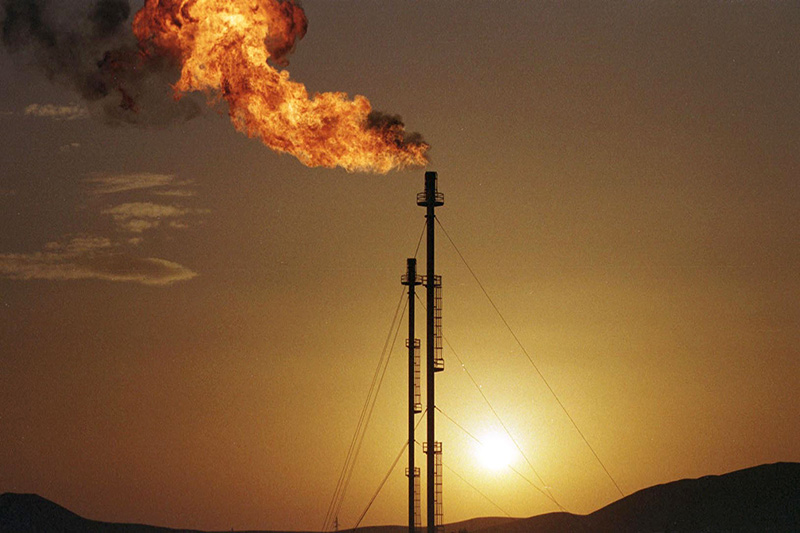Investing.com - Natural gas futures came under heavy selling pressure during U.S. morning trade on Monday, as market players continued to monitor shifting weather forecasts over the next few weeks to gauge the strength of early-Autumn U.S. heating demand.
Prices came under additional pressure as investors cashed out of the market to lock in gains from a recent rally that took prices to the highest level since December 2011 last week.
On the New York Mercantile Exchange, natural gas futures for delivery in November traded at USD3.450 per million British thermal units during U.S. morning trade, sinking 4.4%.
It earlier fell by as much as 4.55% to trade at a session low of USD3.447 per million British thermal units.
On Friday, natural gas prices rallied to USD3.635 per million British thermal units, the strongest level since December 2, 2011, as market players focused on a lower-than-expected injection of natural gas into storage last week.
But prices gave back some gains Monday after updated weather forecasts pointed to mild temperatures across most parts of the U.S. in the next six-to-ten days, reducing early-Autumn heating demand.
The U.S. National Weather Service’s six- to 10-day outlook issued earlier called for above-normal temperatures in the Northeast and Southwest and mostly normal readings elsewhere across the nation.
The Commodity Weather Group echoed that sentiment, saying temperatures in the next two weeks will be normal or above- normal.
Natural gas futures often reach a seasonal low in October, when mild weather reduces demand, before recovering in the winter, when heating-fuel use peaks.
Meanwhile, market players looked ahead to the U.S. Energy Information Administration’s closely watched weekly report on natural gas inventories later in the week.
Early injection estimates range from 30 billion cubic feet to 60 billion cubic feet, compared to last year's build of 106 billion cubic feet. The five-year average change for the week is an increase of 71 billion cubic feet.
Total U.S. gas supplies stood at 3.725 trillion cubic feet, 6.8% above last year’s level and nearly 8% above the five-year average level for the week.
In its monthly short-term energy demand outlook published last week, the EIA projected that natural gas stocks are expected to reach a record high of 3.903 trillion cubic feet on October 31.
U.S. natural gas inventories peaked at a record 3.852 trillion cubic feet in November of last year.
Elsewhere on the NYMEX, light sweet crude oil futures for delivery in December dropped 1.35% to trade at USD91.03 a barrel, while heating oil for November delivery fell 1% to trade at USD3.191 per gallon.
Prices came under additional pressure as investors cashed out of the market to lock in gains from a recent rally that took prices to the highest level since December 2011 last week.
On the New York Mercantile Exchange, natural gas futures for delivery in November traded at USD3.450 per million British thermal units during U.S. morning trade, sinking 4.4%.
It earlier fell by as much as 4.55% to trade at a session low of USD3.447 per million British thermal units.
On Friday, natural gas prices rallied to USD3.635 per million British thermal units, the strongest level since December 2, 2011, as market players focused on a lower-than-expected injection of natural gas into storage last week.
But prices gave back some gains Monday after updated weather forecasts pointed to mild temperatures across most parts of the U.S. in the next six-to-ten days, reducing early-Autumn heating demand.
The U.S. National Weather Service’s six- to 10-day outlook issued earlier called for above-normal temperatures in the Northeast and Southwest and mostly normal readings elsewhere across the nation.
The Commodity Weather Group echoed that sentiment, saying temperatures in the next two weeks will be normal or above- normal.
Natural gas futures often reach a seasonal low in October, when mild weather reduces demand, before recovering in the winter, when heating-fuel use peaks.
Meanwhile, market players looked ahead to the U.S. Energy Information Administration’s closely watched weekly report on natural gas inventories later in the week.
Early injection estimates range from 30 billion cubic feet to 60 billion cubic feet, compared to last year's build of 106 billion cubic feet. The five-year average change for the week is an increase of 71 billion cubic feet.
Total U.S. gas supplies stood at 3.725 trillion cubic feet, 6.8% above last year’s level and nearly 8% above the five-year average level for the week.
In its monthly short-term energy demand outlook published last week, the EIA projected that natural gas stocks are expected to reach a record high of 3.903 trillion cubic feet on October 31.
U.S. natural gas inventories peaked at a record 3.852 trillion cubic feet in November of last year.
Elsewhere on the NYMEX, light sweet crude oil futures for delivery in December dropped 1.35% to trade at USD91.03 a barrel, while heating oil for November delivery fell 1% to trade at USD3.191 per gallon.
